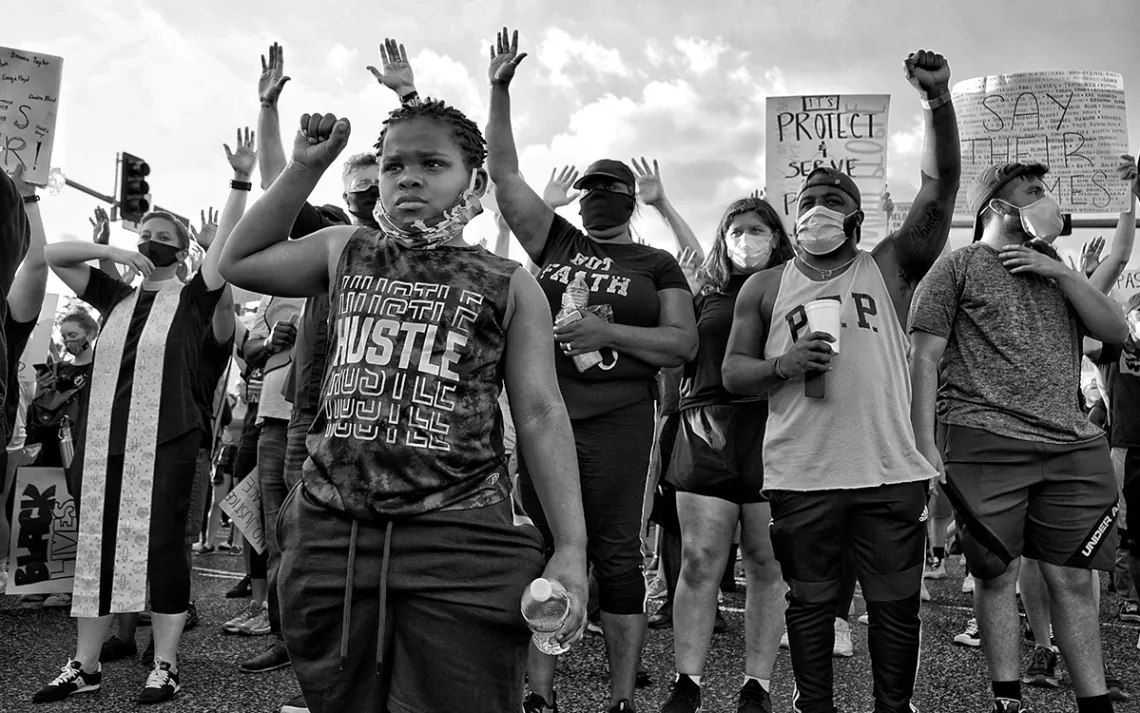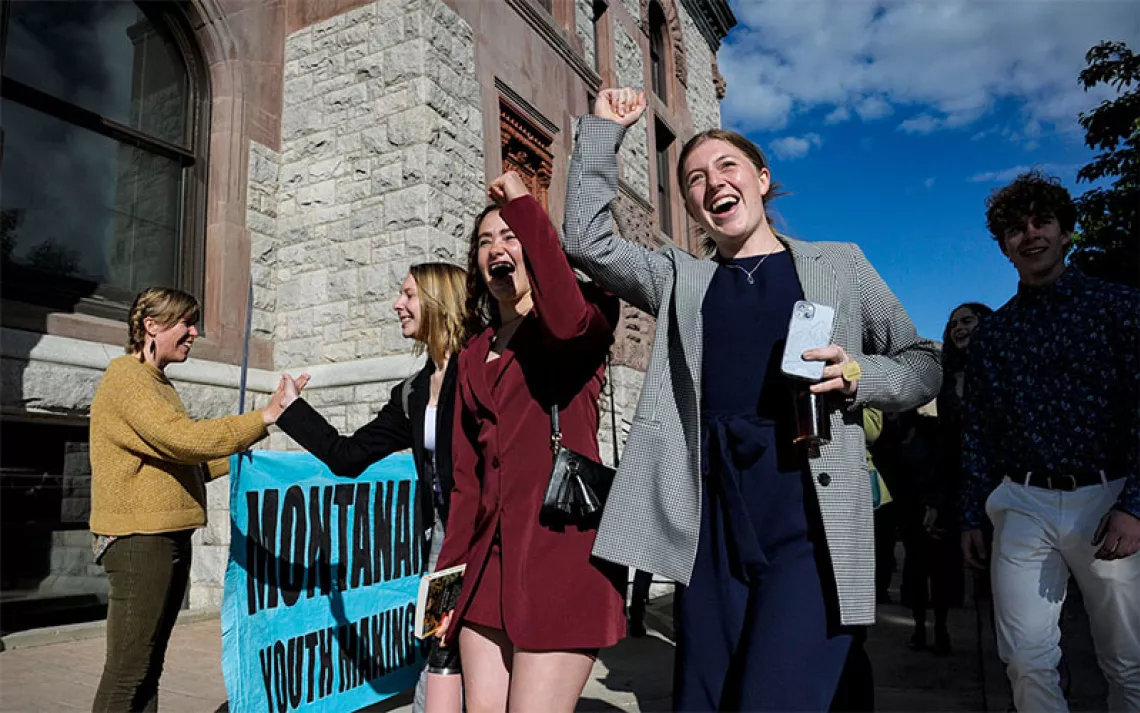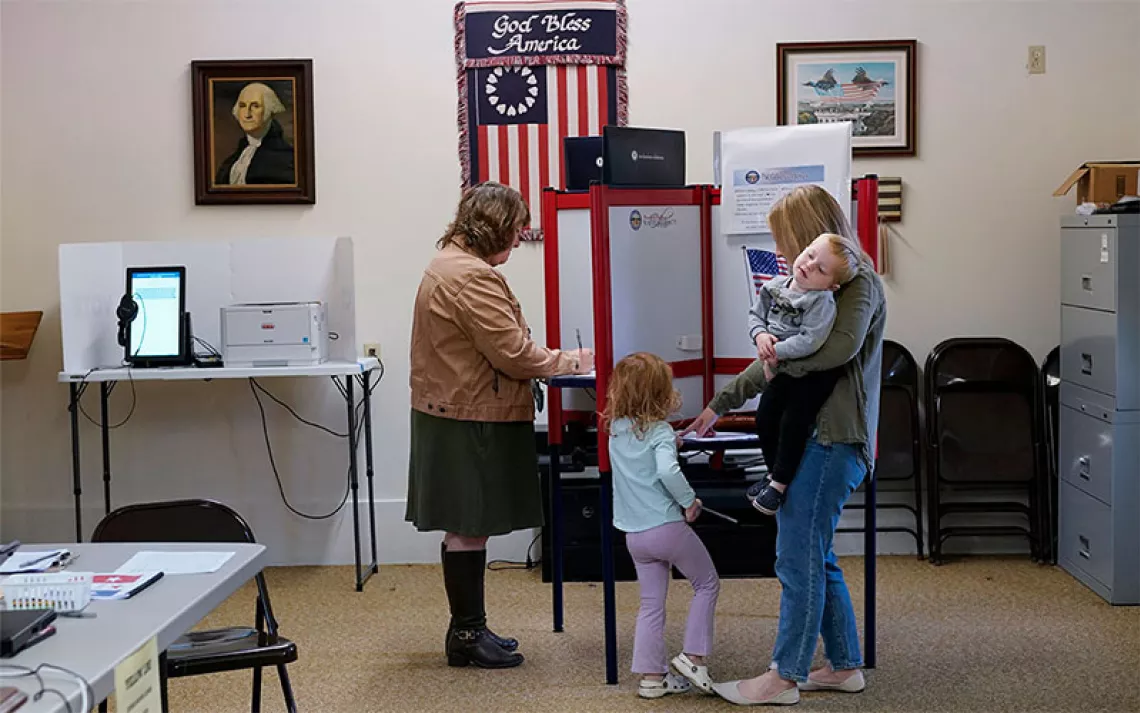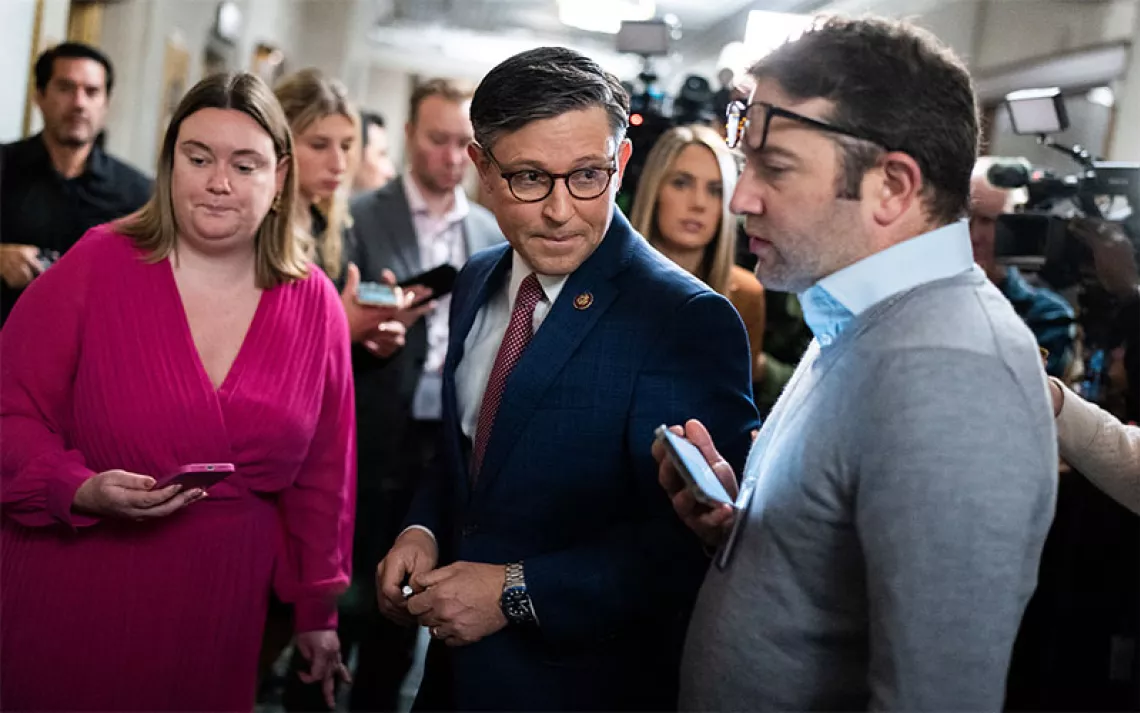What Does It Mean to Defund the Police?
What once seemed politically impossible is now happening

Photo by Vanessa Charlot | Redux
The Minneapolis Board of Education, the Park and Recreation Board, and the University of Minnesota have all voted unanimously to end their security contracts with the Minneapolis Police Department. The Minneapolis City Council pledged to dismantle the police department—though there’s no plan yet on what would replace it, or how it would happen.
In Oakland, California, the school superintendent and a majority of the school board have—over the objections of more than two dozen principals—backed a proposal to get rid of the district’s police department and redirect the $2.8 million now spent on armed officers to student programs. In Los Angeles, the teacher’s union voted to eliminate the school district’s $70 million police budget.
In Philadelphia, the city’s mayor reversed plans to raise the police budget by $19 million, and the Historic Commission denied plans for a new police station in North Philadelphia, after 130 residents joined forces to oppose it, asking that the money be spent on housing, social services, and green space instead.
New York’s mayor Bill DeBlasio, who previously increased the police budget partly by assigning more police to social services work like homeless outreach, vowed to divert some of the city’s police budget into youth and other social services by July 1, though he declined to say how much of the budget would be affected. The New York City Council had no such qualms—in a matter of weeks, it first proposed a 7 percent cut to the NYPD budget, then more than doubled that, to 20 percent.
Access to good elementary, high school, after school, and community college programs are correlated with lower crime in the communities that have them. So is access to food and housing. But in recessions, those programs have—historically—had to absorb deep cuts, while police departments have not had to make the same sacrifices.
Now that’s shifting. In the midst of a historic recession and the worst pandemic in 100 years, police have been caught on camera killing unarmed civilians and beating, shooting, and tear-gassing people who have gathered peacefully to protest the killing of those unarmed civilians. The fact that police departments have historically been major players in local elections—via both endorsements and campaign donations—can’t hold up to the pressure from local residents once they’ve joined forces.
It makes sense that, under those circumstances, there would be a move to defund police budgets. But it’s important to understand what led to this moment, and what remains to be done.
For the past 40 years, police budgets have grown, even as cities have become safer
On average, the overall percentage of city budgets dedicated to the police force rose about 1.2 percentage points between 1977 and 2017, to 7.8 percent. That rise is odd in light of the dramatic drop in violent crime in major cities during that time (a change attributed in part to the phasing out of leaded gasoline that began in the 1970s). But as crime went down, police budgets did not. Meanwhile, massive cuts to affordable housing, education, public health, and welfare at the national level during that time period led to an epidemic of homelessness that persists to this day.
Three major windfalls in funding for police, in the form of the 1994 crime bill, Homeland Security (which provided both more funding and access to free or cheap military surplus equipment), and the 1984 Comprehensive Crime Control Act (which controversially permitted police departments to fund themselves by taking money, cars, homes, and other assets from people, whether or not they ever charged that person with a crime) also didn’t lead to a commensurate decline in their share of city budgets.
Cities like Minneapolis have already tried to reform their police departments
The use of body cameras became standard in many police departments after the killing of Michael Brown in Ferguson, Missouri—in part because the Obama administration took steps to subsidize their purchase and use with federal funding. But in the years that followed, police didn’t always turn on their body cameras, and departments were reluctant to release footage when they did have it. The body camera footage of George Floyd’s arrest was heavily redacted by the MPD—audio appeared to be missing, and much of the footage was blocked with floating black squares. It took video captured by a 17 year-old girl with her cellphone to reveal what had actually happened.
The Minneapolis Police Department received implicit bias training and body cameras after eyewitnesses reported, in 2015, seeing a MPD officer shoot 24-year-old Jamar Clark while his hands were cuffed behind his back (MPD maintains that the witnesses were mistaken). After Clark’s death, the Minneapolis Police Department also appointed its first Black police chief and changed policies so that other officers were now obligated to intervene if they saw a colleague endangering someone’s life. But even with a crowd of people standing nearby, begging them to save Floyd, none of the three officers accompanying Derek Chauvin did anything to stop him, and the team later filed a false police report.
The federal government—particularly during the Obama administration—has also tried to reform the police
Police forces that show a pattern of civil rights violations run the risk of being put into receivership by the federal government, which appoints a federal monitor to work with a local police department. In recent years, Cleveland, Detroit, and New Orleans all went through this process. But paying federal monitors to keep an eye on police malfeasance actually increased police budgets—and, in Detroit—led to allegations that the federal monitor herself was corrupt.
There’s no one idea of what “Defund the police” looks like
Many cities agree that it’s time to reverse the steady creep upward that police budgets have made since the 1970s—especially while facing down a major recession that is already demanding steep cuts. King County Equity Now, in Seattle, put forward a proposal to cut the police budget by at least 50 percent. The People’s Budget put together by a group of Los Angeles residents proposes reducing the police budget to 1.64 percent of general funds, with the difference going to housing, public health, education, food security, public transportation, and environmental justice.
Several cities, including Minneapolis, Oakland, Denver, and San Francisco, are considering redirecting money from police budgets and developing a program similar to Eugene, Oregon’s CAHOOTS, which dispatches a mental health worker and a medic instead of police to situations like welfare checks and potential overdoses.
CAHOOTS currently costs about $2 million, and estimates that it’s saved Eugene about $8.5 million a year—but it hasn’t significantly diminished the Eugene Police Department, which still makes up about 10 percent of the city’s budget. A program like CAHOOTS also would not have prevented most of the killings by police that have led to this call for reform. It might have prevented the death of Atatiana Jefferson, who was shot by police responding to a welfare check, called in by a neighbor who noticed that her front door was open, but it would not have protected George Floyd, Michael Brown, Tamir Rice, Sandra Bland, or Breonna Taylor. It would also not have protected Levi Alaya or journalists like Linda Tirado, who were both shot by police who were assigned to monitor protests.
One of the simplest descriptions of what police defunding could look like came from Representative Alexandria Ocasio-Cortez, who wrote on Instagram that an America with defunded police “looks like a suburb.”
Affluent white communities already live in a world where they choose to fund youth, health, housing, etc. more than they fund police. These communities have lower crime rates, but because they have more resources to support healthy society in a way that reduces crime. White communities bend over backwards to find alternatives to incarceration for their loved ones to “protect their future” like community service or rehab or restorative measures. Why don’t we treat Black and Brown people the same way?
And it’s a reminder of the importance of dreaming big
Six years ago, a group of activists blocked a BART train in Oakland after a grand jury refused to punish police officer Darren Wilson for shooting an unarmed teenager, Michael Brown, in Ferguson. The transit stop they occupied—West Oakland—had a history: one of pollution, redlining, and the demolition of Black-owned businesses and homes with an actual military surplus tank. The protest—held on Black Friday, the biggest shopping day of the year—was a message to San Francisco and Oakland that we were not so different from Ferguson, and that there were old crimes that needed to be dealt with.
One of the protesters was Alicia Garza, who had actually devised the slogan “Black Lives Matter” years earlier with two other organizers: Patrisse Cullors and Opal Tometi. In an interview with Garza and Cullors, they talked about a plan for police reform that went beyond what was being discussed on a national and local level and reached back to Great Society programs like the War on Poverty.
To them, it wasn’t enough to better document police abuses or remove abusive officers from their jobs. Everything that had led to those shootings had to be unwoven and rebuilt, until each person was seen as too important, as an individual, to be written off by society. Or, as Ruth Wilson Gilmore put it, “Where life is precious, life is precious.”
“We have to actually think about public safety from a holistic view,” Cullors said. “Often when people talk about public safety, they mean policing—but public safety also means when people don’t have to go to bed hungry and when people have a roof over their heads. That’s what makes communities safe.”
At the time those ideas felt buoyant and hopeful, and very far away. To see that change is a reminder of just how much is possible.
Note: The Sierra Club is one of several environmental organizations that support the demands made as part of the Movement for Black Lives Week of Action. You can find those demands here.
 The Magazine of The Sierra Club
The Magazine of The Sierra Club



